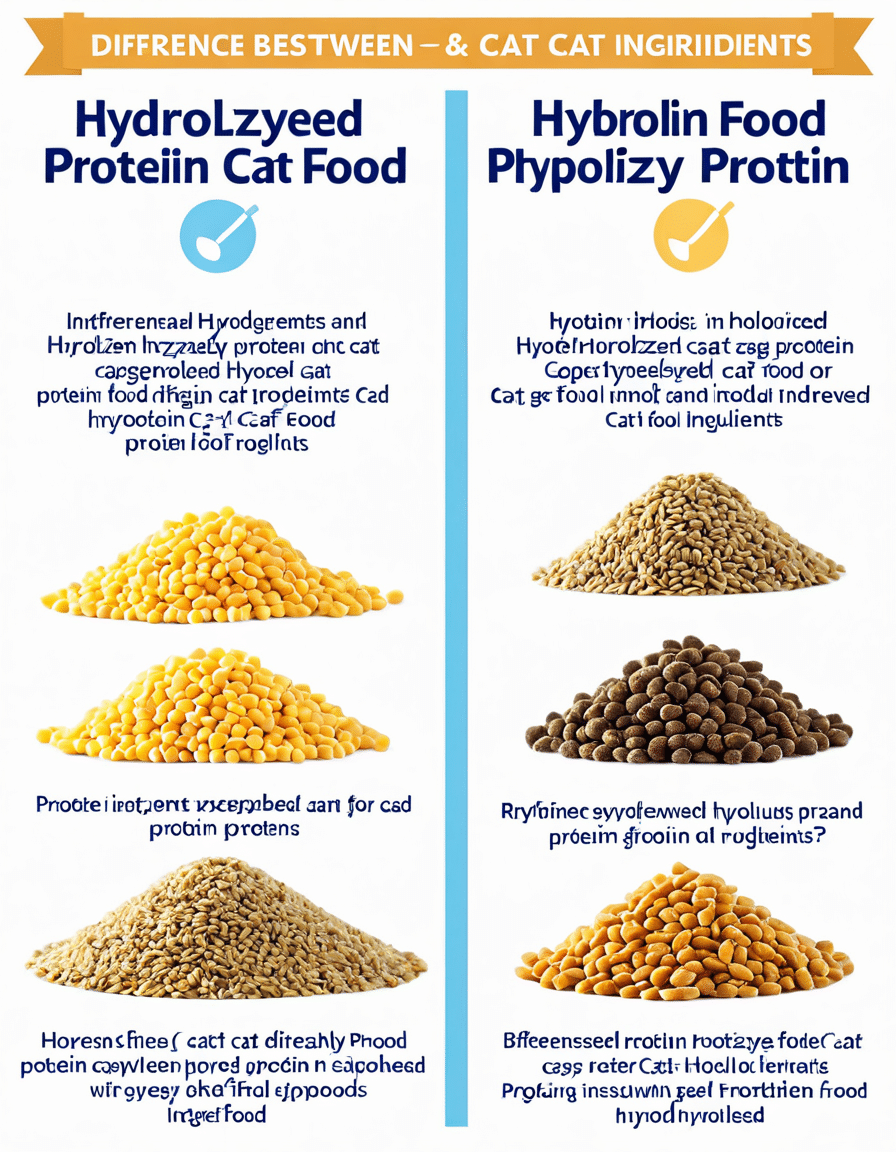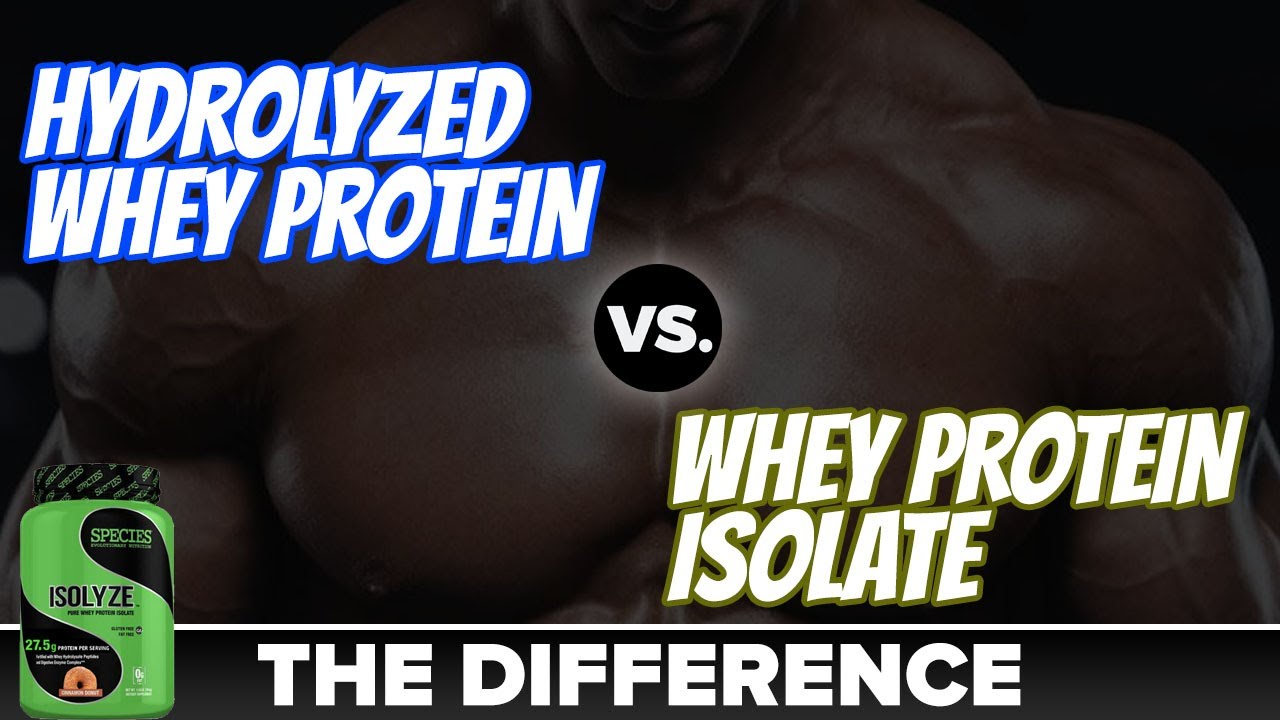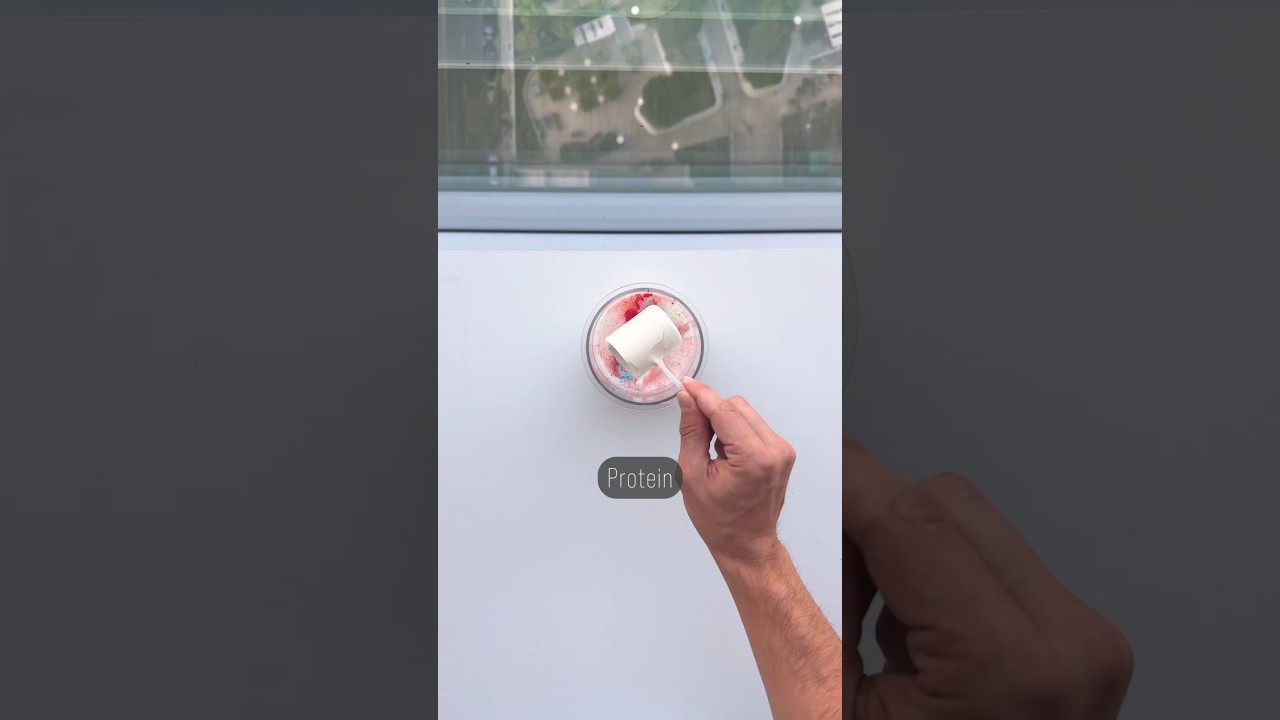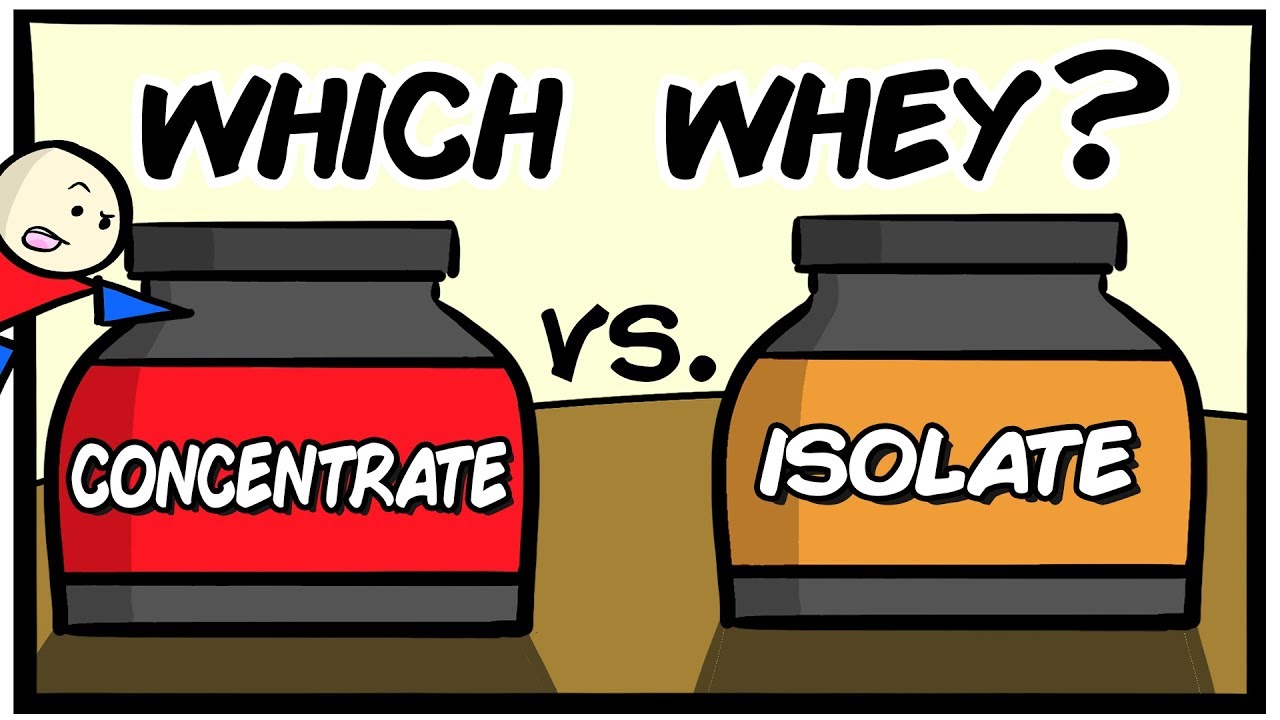Navigating the nuances of pet nutrition isn’t just for experts; it’s crucial for every pet owner. One vital aspect that often leads to confusion is the difference between hydrolyzed protein and regular protein. Understanding this difference can significantly impact your pet’s health, especially if food sensitivities or allergies are at play. So, let’s dive in and unpack what hydrolyzed protein means for your furry friends.
## Difference Between Hydrolyzed Protein Pet Owners Must Know
At its core, hydrolyzed protein is made through a specialized process that breaks down protein sources into smaller peptides. This meticulous process makes these proteins easier for pets with food sensitivities or allergies to digest. Unlike standard protein sources that can act like a trigger, hydrolyzed proteins boast a lower allergenic potential. This feature has made them a preferred choice for brands like Hill’s Prescription Diet™ and Royal Canin®, which create diets designed specifically for pets prone to allergies or gastrointestinal issues.
In regular protein sources—think chicken, beef, or fish—these proteins can provoke an immune response in sensitive pets, leading to symptoms ranging from itching and scratching to more severe gastrointestinal distress. Overall, hydrolyzed proteins represent a way to keep your pet’s diet nutritious while mitigating the risks associated with food allergies.

2. Top 5 Distinctions Between Hydrolyzed Proteins and Regular Proteins
2.1. Allergenicity
The biggest difference between hydrolyzed protein and regular protein is allergenicity. As stated earlier, hydrolyzed proteins undergo a process that minimizes their potential to cause allergic reactions. Brands like Purina Pro Plan® Veterinary Diets have worked hard to ensure that the proteins used in their products are broken down enough to limit allergenic reactions in sensitive pets. In contrast, regular proteins like chicken or beef can spark allergies in certain pets. For example, if Fido can’t seem to stop scratching, it might be time for a dietary rethink.
2.2. Digestibility
Another notable distinction is digestibility. Research in veterinary nutrition indicates that hydrolyzed proteins exhibit higher digestibility rates than their regular counterparts. Pets consuming diets rich in hydrolyzed proteins generally experience improved nutrient absorption. This means they benefit from better overall health, leading to livelier and happier pets. If your dog is experiencing nutritional challenges, a hydrolyzed diet might be an excellent option to consider.
2.3. Price Point
It’s no secret that you often get what you pay for, and this is evident in the price of hydrolyzed protein diets. Hydrolyzed protein products tend to come with a hefty price tag because of the specialized processes involved in their creation. Expect to pay more for these diets compared to traditional options, but think of it as an investment in your pet’s health. While brands like Royal Canin® and Hill’s Prescription Diet™ may lighten your wallet a bit, they could save you from costly vet visits down the line.
2.4. Nutritional Profiles
When comparing the nutritional profiles, it’s important to note that while regular proteins are often rich in amino acids, hydrolyzed proteins might lack some specific nutrients found in their whole food counterparts. For instance, a kibble based on whole chicken could offer various vitamins missing from a hydrolyzed chicken formula. Pet owners should be aware that careful dietary planning may be necessary to ensure their pets receive all essential nutrients.
2.5. Use Cases
Hydrolyzed proteins are particularly beneficial for pets with specific dietary restrictions, while regular proteins are typically best suited for generally healthy animals without known sensitivities. Take Bella, the golden retriever, as an example. She had chronic ear infections linked to food allergies, but switching her to a hydrolyzed protein diet resolved her problems. Each pet is unique, so understanding the difference between hydrolyzed protein and regular protein can shape their health journey profoundly.
3. Recognizing Signs of Allergy in Pets: Observing Body Language of Spirring
Understanding your pet’s body language is crucial in recognizing signs of distress or allergies. Generally, pets communicating discomfort may exhibit behavioral changes. Increased scratching, licking, or hiding can indicate a food allergy, and these actions often translate into visible agitation or anxiety. For instance, if your dog starts avoiding playtime or becomes unusually withdrawn, it may warrant a look into their diet.
In serious cases, symptoms can escalate, leading to changes in body language signaling more significant health issues. Keep an eye out for signs such as vomiting or diarrhea. When it comes to diagnosing potential allergies, your pet’s behavior can act as the first line of defense.

4. Unique Nutritional Needs: When Canine Tooth is Suddenly Changing Color
Diet can remarkably impact not just your pet’s overall health but also their dental condition. Have you noticed your dog’s tooth suddenly changing color? This could suggest underlying health issues related to their nutrition. Moreover, dietary deficiencies could exacerbate existing problems.
Hydrolyzed protein diets may help in preventing dental issues: monitoring what changes occur in your pet’s diet is important for their dental health. Pets on a richer diet often showcase overall better health, reducing the likelihood of oral problems down the line.
5. Introducing New Foods: Gradually Introduces to Solid Food
So, you’re ready to make the switch to a hydrolyzed protein diet. Hold your horses! It’s super important to introduce the new food gradually. Sudden dietary changes can lead to digestive upheaval—a situation no pet owner wants to deal with. Blend the hydrolyzed food with their regular diet over the course of a week. This gradual approach allows your pet’s digestive system to adapt, paving the way for smoother transitions.
Monitoring how your pet reacts during this transition is also essential. Ensure they’re adjusting well to the new food, both in terms of their digestive health and overall happiness.
6. Care for Exotic Pets: The Impact of Diet on Lifescapes and Well-being
It’s not just dogs and cats that benefit from a specialized diet; exotic pets have unique nutritional needs too. Whether you’re caring for reptiles, birds, or small mammals, understanding how diet impacts health is vital. For example, lizards require a balanced diet rich in nutrients to thrive. A poor diet can lead to serious health issues, and if your pet lizard dies, you might wonder, “When lizard dies will its body harden?” The answer is yes; decomposition rates can vary, but a nutrient-rich diet during life significantly affects overall health.
Just as in dogs and cats, a balanced diet can prolong life and enhance well-being, underscoring the importance of proper nutrition across species.
In conclusion, understanding the difference between hydrolyzed protein and regular protein can profoundly affect your pet’s health journey. Awareness is a powerful tool for pet owners. From recognizing signs of allergies to ensuring proper nutrition, taking time to understand these elements will position pets toward healthier and happier lives. The insights shared in this article—paired with a thoughtful approach to your pet’s dietary needs—will serve as a beacon of health for your beloved companions.
As pet owners, it’s a responsibility that resonates deeply; the care you offer creates a lasting impact on the quality of life for your furry (or scaly) friends. Make informed choices, and watch them thrive!
The Difference Between Hydrolzyed Protein Pet Owners Must Know
Understanding Hydrolzyed Protein
When you’re diving into the difference between hydrolzyed protein, we’re talking about how certain proteins have been broken down into smaller pieces, or peptides, to make them easier for pets to digest and absorb. This is especially important for pets with food sensitivities or allergies, as it can reduce the likelihood of adverse reactions. Just like how Revolution flea And tick treatments help manage pests effectively by targeting their biology, hydrolzyed proteins aim to do the same with your pet’s diet.
But here’s a fun fact: did you know that the way protein is processed can affect not just digestion but also your pet’s overall health? For instance, after spaying, many pet owners notice a female dog behavior change after spaying that can influence dietary needs. Proper nutrition, including the right kind of protein, can play a crucial role in maintaining your pet’s energy and behavior post-surgery.
Types of Hydrolzyed Proteins
Now, onto specifics! There are typically two types of hydrolzyed proteins you might encounter: those derived from animal sources and those from plants. Animal-based proteins are often more digestible for many pets, similar to how male cat before And after neutering changes can be significant depending on care and diet choices post-surgery. Plant-based proteins, while still beneficial, might be a little trickier for some pets. One study even hints at potential links with renal enlargement in cases where diets are improperly balanced.
Additionally, here’s something to chew on – proteins not only support muscle growth but also play a vital role in immune functions. If you’ve tried Bodyweight Bicep Exercises, you know the importance of protein to recovery and performance. It’s the same for pets—having the right nutritional profile can help them thrive, especially after changes in their health status or diet.
The Role of Protein in Pet Health
Understanding the difference between hydrolzyed protein and traditional protein sources can be like differentiating between a trendy Balenciaga shirt and your comfy old tee—it’s all about purpose and function. Just as you’d dress for the occasion, your pet’s meal should fit their specific health needs. Fun trivia: pet owners often see improved coat condition and energy levels when switching to diets that incorporate hydrolzyed proteins. It’s a real game-changer!
In conclusion, being savvy about the difference between hydrolzyed protein can make a world of difference for your furry friends. So whether you’re battling pesky bugs with “Revolution flea and tick” or just trying to keep up with the latest pet care trends, remember that knowledge is power. For more trivia, did you know that protein quality in pet food is often overlooked? Many owners could benefit from recognizing that not all proteins are created equal. To sum it up, it’s like playing Wowhead sod in the gaming world—understanding the characters and their strengths leads to a better gaming experience, just like knowing your pet’s nutrition leads to a healthier and happier life.

Is hydrolyzed protein better than regular protein?
Hydrolyzed protein can be easier for some folks to digest compared to regular protein since it’s broken down into smaller peptides. This means it may be better for people who have sensitive stomachs or allergies.
What are the disadvantages of hydrolyzed protein?
One downside of hydrolyzed protein is that it can taste different – often more bitter – because of the processing. It’s also usually pricier than regular protein powders, which might not fit everyone’s budget.
Is hydrolyzed beef protein better than whey protein?
Hydrolyzed beef protein and whey protein each have their pros and cons. If you’re looking for lactose-free options, hydrolyzed beef protein might be better, but whey protein often has better bioavailability and is quickly absorbed.
What is the difference between hydrolyzed and 100% whey protein?
The difference lies in the processing. Hydrolyzed protein has already been broken down for easier digestion, while 100% whey protein hasn’t gone through this process, so it may take longer for your body to absorb.
Is hydrolyzed protein better for weight loss?
Hydrolyzed protein can support weight loss due to its potential for faster absorption and helping you feel full. However, it’s important to combine it with a balanced diet for the best results.
Is it better to drink hydrolyzed protein before or after workout?
Drinking hydrolyzed protein after a workout is usually the better choice, as it helps with muscle recovery and growth by providing your body with the necessary nutrients right when it needs them.
What is the healthiest protein powder to eat?
The healthiest protein powder really depends on your specific needs, but many people find plant-based or whey protein isolates to be great options as they usually have low sugars and additives.
Is hydrolyzed whey protein inflammatory?
Hydrolyzed whey protein isn’t typically considered inflammatory; in fact, it may help reduce inflammation due to its amino acid profile, but individual reactions can vary.
Who needs hydrolyzed protein?
People with digestive issues, allergies, or those recovering from surgery may benefit most from hydrolyzed protein due to its easier digestibility.
What is the best hydrolyzed protein?
The best hydrolyzed protein varies depending on personal preferences, but brands that offer clean ingredients and good taste, like Vital Proteins or ProMix, are often recommended.
Is hydrolyzed beef protein isolate just collagen?
Hydrolyzed beef protein isolate is not just collagen; it includes a range of amino acids, though collagen is often a key component of beef protein isolates.
How much protein per day?
Most adults need about 0.8 grams of protein per kilogram of body weight daily, but this can change based on activity levels and specific health goals.
What is the easiest protein powder to digest?
The easiest protein powders to digest are usually hydrolyzed whey or plant-based options like pea protein, as they don’t have a lot of extra fillers.
Which whey protein is best, isolate or concentrate or hydrolyzed?
For whey protein, hydrolyzed is often the best choice for quick absorption, while isolates are great for those looking for low carbs and fats. Concentrates can also be good but may have more lactose.
Who should take hydrolyzed whey protein?
Athletes and active individuals often benefit from hydrolyzed whey protein as it helps with muscle recovery and quick nutrient delivery right after workouts.
Is hydrolyzed collagen peptides better than whey protein?
Hydrolyzed collagen peptides can be good but serve different purposes than whey protein, which is more focused on muscle-building. If you’re looking for joint health, collagen’s a winner; for muscle gain, go with whey.
Who needs hydrolyzed protein?
Those recovering from injury, with digestive issues, or looking to optimize protein intake after workouts are the ones who’ll really benefit from hydrolyzed protein.
Does hydrolyzed protein build muscle?
Yes, hydrolyzed protein can help build muscle due to its fast absorption and delivery of amino acids to muscles right when they need it for recovery and repair.
What are the advantages of protein hydrolysis?
Advantages of protein hydrolysis include faster digestion and absorption, which can be beneficial for athletes or those who need quick nutrition. It also may reduce allergenic potential in sensitive individuals.





